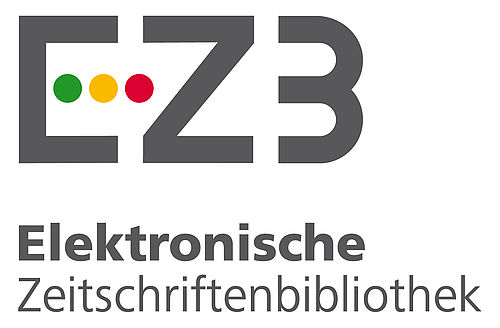Abstract
References
- 1. Aslan, R., Taşkın Kafa, A. H., Hasbek, M., & Çelik, C. (2021). Evaluation of In Vitro Antimicrobial Effect of Different Essential Oils. Turkish Bulletin of Hygiene and Experimental Biology, 78(4), 525–534. https://doi.org/10.5505/TurkHijyen.2021.87864
- 2. Awouafack, M. D., McGaw, L. J., Gottfried, S., Mbouangouere, R., Tane, P., Spiteller, M., & Eloff, J. N. (2013). Antimicrobial activity and cytotoxicity of the ethanol extract, fractions and eight compounds isolated from Eriosema robustum (Fabaceae). BMC Complementary and Alternative Medicine, 13. https://doi.org/10.1186/1472-6882-13-289
- 3. Bakkali, F., Averbeck, S., Averbeck, D., & Idaomar, M. (2008). Biological effects of essential oils – A review. Food and Chemical Toxicology, 46(2), 446–475. https://doi.org/10.1016/j.fct.2007.09.106
- 4. Balkan, C. E., Karamese, M., Celebi, D., Aydogdu, S., Dicle, Y., & Calik, Z. (2016). The Determination of the Antibacterial Activities of Rose, Thyme, Centaury and Ozone Oils against Some Pathogenic Microorganisms. Kafkas Journal of Medical Sciences, 6(1), 18–22. https://doi.org/10.5505/kjms.2016.87587
- 5. Başer, K. H. C. (2022). Kekik. Türkiye Tabiatını Koruma Derneği Tabiat Ve İnsan Dergisi, 1(191), 1–91.
- 6. Bilge Oral, N., Vatansever, L., Duman Aydın, B., Sezer, Ç., Güven, A., Gülmez, M., Başer, K. H. C., & Kürkçüoğlu, M. (2009). Kekik Uçucu Yağının Stafilokoklar ve Escherichia coli Tarafından Oluşturulan Biyofilmler Üzerine Etkisi. Kafkas Universitesi Veteriner Fakultesi Dergisi. https://doi.org/10.9775/kvfd.2009.1147
- 7. Demirçakmak, B. (1994). Cedrus Libani Uçucu Yağının Bilesimi. Anadolu Üniversitesi Sağlık Bilimleri Enstitüsü.
- 8. Djeussi, D. E., Noumedem, J. A., Seukep, J. A., Fankam, A. G., Voukeng, I. K., Tankeo, S. B., Nkuete, A. H., & Kuete, V. (2013). Antibacterial activities of selected edible plants extracts against multidrug-resistant Gram-negative bacteria. BMC Complementary and Alternative Medicine, 13(1), 164. https://doi.org/10.1186/1472-6882-13-164
- 9. Ersoy, H. (2009). Edtu Herbaryumu’nda bulunan Lamiaceae (Ballıbabagiller) Familyası’nın Revizyonu, [Doktora tezi]. Trakya Üniversitesi.
- 10. Ertürk, R., Çelik, C., Kaygusuz, R., & Aydın, H. (2010). Ticari olarak satılan kekik ve nane uçucu yağlarının antimikrobiyal aktiviteleri . Cumhuriyet Tıp Derg , 32, 281–286.
- 11. Jianu, C. (2014). Thymus vulgaris essential oil: chemical composition and antimicrobial activity. In Journal of Medicine and Life (Vol. 7).
- 12. Kaskatepe, B., Yildiz, S. S., Kiymaci, M. E., Yazgan, A. N., Cesur, S., & Erdem, S. A. (2017). Chemical composition and antimicrobial activity of the commercial Origanum onites L. oil against nosocomial carbapenem resistant extended spectrum beta lactamase producer Escherichia coli isolates. Acta Biologica Hungarica, 68(4), 466–476. https://doi.org/10.1556/018.68.2017.4.11
- 13. Kemer, Ç., Akın, M., & Taner Saraçoğlu, H. (2022). Lamiaceae Familyasına Mensup Bazı Baharat Bitkilerinin Antimikrobiyal Etkilerinin Belirlenmesi. Selçuk Üniversitesi Fen Fakültesi Fen Dergisi, 48(1), 19–24. https://doi.org/10.35238/sufefd.1050104
- 14. Kürekçi, C., & Sakin, F. (2017). Uçucu Yağlar: Antimikrobiyal Açıdan Uçucu Yağlar: In-Vitro ve In-Vivo Çalışmalar. Türkiye Klinikleri, 3(1), 15–20.
- 15. Lambert, R. J. W., Skandamis, P. N., Coote, P. J., & Nychas, G.-J. E. (2001). A study of the minimum inhibitory concentration and mode of action of oregano essential oil, thymol and carvacrol. Journal of Applied Microbiology, 91(3), 453–462. https://doi.org/10.1046/j.1365-2672.2001.01428.x
- 16. Pfaller, M. A., Espinel-Ingroff, A., Canton, E., Castanheira, M., Cuenca-Estrella, M., Diekema, D. J., Fothergill, A., Fuller, J., Ghannoum, M., Jones, R. N., Lockhart, S. R., Martin-Mazuelos, E., Melhem, M. S. C., Ostrosky-Zeichner, L., Pappas, P., Pelaez, T., Peman, J., Rex, J., & Szeszs, M. W. (2012). Wild-Type MIC Distributions and Epidemiological Cutoff Values for Amphotericin B, Flucytosine, and Itraconazole and Candida spp. as Determined by CLSI Broth Microdilution. Journal of Clinical Microbiology, 50(6), 2040–2046. https://doi.org/10.1128/JCM.00248-12
- 17. Sadıkoğlu, N. (2005). Kekik Olarak Kullanılan Türler Üzerinde Farmasötik Botanik Araştırmalar [Doktora tezi]. İstanbul Üniversitesi.
- 18. Şahin, F., Güllüce, M., Daferera, D., Sökmen, A., Sökmen, M., Polissiou, M., Agar, G., & Özer, H. (2004). Biological activities of the essential oils and methanol extract of Origanum vulgare ssp. vulgare in the Eastern Anatolia region of Turkey. Food Control, 15(7), 549–557. https://doi.org/10.1016/j.foodcont.2003.08.009
- 19. Sarac, N., & Ugur, A. (2008). Antimicrobial activities of the essential oils of Origanum onites L., Origanum vulgare L. subspecies hirtum (Link) Ietswaart, Satureja thymbra L., and Thymus cilicicus Boiss. & Bal. growing wild in Turkey. Journal of Medicinal Food, 11(3), 568–573. https://doi.org/10.1089/jmf.2007.0520 20. Stahl-Biskup, E., & Saez, F. (2002). Thyme (E. Stahl-Biskup & F. Saez, Eds.). CRC Press. https://doi.org/10.4324/9780203216859
- 21. Tullio, V., Nostro, A., Mandras, N., Dugo, P., Banche, G., Cannatelli, M. A., Cuffini, A. M., Alonzo, V., & Carlone, N. A. (2007). Antifungal activity of essential oils against filamentous fungi determined by broth microdilution and vapour contact methods. Journal of Applied Microbiology, 102(6), 1544–1550. https://doi.org/10.1111/j.1365-2672.2006.03191.x
- Uçar, E., Odabaş Kösa, E., Özyiğit, Y., & Turgut, K. (2015). Bazı Tıbbi ve Aromatik Bitkilerde Esansiyel Yağların Antimikrobiyal Aktivitelerinin Belirlenmesi . Süleyman Demirel Üniversitesi Ziraat Fakültesi Dergisi , 10(2), 118–124
Abstract
In this study, the antimicrobial efficacy of four commercial brands of oregano (Origanum vulgare) essential oil, sourced from four different vendors (pharmacy, e-commerce, herbalist, and supplier), was evaluated and compared according to their place of purchase. The research utilized standard strains, including Gram-negative bacteria Escherichia coli ATCC 25922 and Pseudomonas aeruginosa ATCC 27853; Gram-positive bacteria Staphylococcus aureus ATCC 29213 and Bacillus cereus ATCC 14579; and fungi Candida albicans ATCC 10231 and Candida tropicalis DSM 11953. Antimicrobial activity was determined using the Minimum Inhibitory Concentration (MIC) method. Among the four brands tested at ten different concentrations on four bacterial and two fungal strains, the thyme essential oil sourced from the pharmacy demonstrated the highest level of antimicrobial activity. Based on our experimental results, the essential oils demonstrated the strongest inhibitory activity against Candida albicans, whereas Staphylococcus aureus exhibited the highest resistance to the tested oils.. All tested concentrations of essential oil samples allowed the growth of S. aureus. These findings indicate that essential oils sold in the market and online, intended for therapeutic purposes, vary significantly in quality. Economic incentives may lead to adulteration of these oils, underscoring the importance of using plant material from the correct species and considering the geographical conditions that influence the plant’s chemical composition. The superior antimicrobial efficacy of the pharmacy-sourced thyme essential oil highlights the need to rely on trained health professionals when selecting products for health-related purposes.
Keywords
References
- 1. Aslan, R., Taşkın Kafa, A. H., Hasbek, M., & Çelik, C. (2021). Evaluation of In Vitro Antimicrobial Effect of Different Essential Oils. Turkish Bulletin of Hygiene and Experimental Biology, 78(4), 525–534. https://doi.org/10.5505/TurkHijyen.2021.87864
- 2. Awouafack, M. D., McGaw, L. J., Gottfried, S., Mbouangouere, R., Tane, P., Spiteller, M., & Eloff, J. N. (2013). Antimicrobial activity and cytotoxicity of the ethanol extract, fractions and eight compounds isolated from Eriosema robustum (Fabaceae). BMC Complementary and Alternative Medicine, 13. https://doi.org/10.1186/1472-6882-13-289
- 3. Bakkali, F., Averbeck, S., Averbeck, D., & Idaomar, M. (2008). Biological effects of essential oils – A review. Food and Chemical Toxicology, 46(2), 446–475. https://doi.org/10.1016/j.fct.2007.09.106
- 4. Balkan, C. E., Karamese, M., Celebi, D., Aydogdu, S., Dicle, Y., & Calik, Z. (2016). The Determination of the Antibacterial Activities of Rose, Thyme, Centaury and Ozone Oils against Some Pathogenic Microorganisms. Kafkas Journal of Medical Sciences, 6(1), 18–22. https://doi.org/10.5505/kjms.2016.87587
- 5. Başer, K. H. C. (2022). Kekik. Türkiye Tabiatını Koruma Derneği Tabiat Ve İnsan Dergisi, 1(191), 1–91.
- 6. Bilge Oral, N., Vatansever, L., Duman Aydın, B., Sezer, Ç., Güven, A., Gülmez, M., Başer, K. H. C., & Kürkçüoğlu, M. (2009). Kekik Uçucu Yağının Stafilokoklar ve Escherichia coli Tarafından Oluşturulan Biyofilmler Üzerine Etkisi. Kafkas Universitesi Veteriner Fakultesi Dergisi. https://doi.org/10.9775/kvfd.2009.1147
- 7. Demirçakmak, B. (1994). Cedrus Libani Uçucu Yağının Bilesimi. Anadolu Üniversitesi Sağlık Bilimleri Enstitüsü.
- 8. Djeussi, D. E., Noumedem, J. A., Seukep, J. A., Fankam, A. G., Voukeng, I. K., Tankeo, S. B., Nkuete, A. H., & Kuete, V. (2013). Antibacterial activities of selected edible plants extracts against multidrug-resistant Gram-negative bacteria. BMC Complementary and Alternative Medicine, 13(1), 164. https://doi.org/10.1186/1472-6882-13-164
- 9. Ersoy, H. (2009). Edtu Herbaryumu’nda bulunan Lamiaceae (Ballıbabagiller) Familyası’nın Revizyonu, [Doktora tezi]. Trakya Üniversitesi.
- 10. Ertürk, R., Çelik, C., Kaygusuz, R., & Aydın, H. (2010). Ticari olarak satılan kekik ve nane uçucu yağlarının antimikrobiyal aktiviteleri . Cumhuriyet Tıp Derg , 32, 281–286.
- 11. Jianu, C. (2014). Thymus vulgaris essential oil: chemical composition and antimicrobial activity. In Journal of Medicine and Life (Vol. 7).
- 12. Kaskatepe, B., Yildiz, S. S., Kiymaci, M. E., Yazgan, A. N., Cesur, S., & Erdem, S. A. (2017). Chemical composition and antimicrobial activity of the commercial Origanum onites L. oil against nosocomial carbapenem resistant extended spectrum beta lactamase producer Escherichia coli isolates. Acta Biologica Hungarica, 68(4), 466–476. https://doi.org/10.1556/018.68.2017.4.11
- 13. Kemer, Ç., Akın, M., & Taner Saraçoğlu, H. (2022). Lamiaceae Familyasına Mensup Bazı Baharat Bitkilerinin Antimikrobiyal Etkilerinin Belirlenmesi. Selçuk Üniversitesi Fen Fakültesi Fen Dergisi, 48(1), 19–24. https://doi.org/10.35238/sufefd.1050104
- 14. Kürekçi, C., & Sakin, F. (2017). Uçucu Yağlar: Antimikrobiyal Açıdan Uçucu Yağlar: In-Vitro ve In-Vivo Çalışmalar. Türkiye Klinikleri, 3(1), 15–20.
- 15. Lambert, R. J. W., Skandamis, P. N., Coote, P. J., & Nychas, G.-J. E. (2001). A study of the minimum inhibitory concentration and mode of action of oregano essential oil, thymol and carvacrol. Journal of Applied Microbiology, 91(3), 453–462. https://doi.org/10.1046/j.1365-2672.2001.01428.x
- 16. Pfaller, M. A., Espinel-Ingroff, A., Canton, E., Castanheira, M., Cuenca-Estrella, M., Diekema, D. J., Fothergill, A., Fuller, J., Ghannoum, M., Jones, R. N., Lockhart, S. R., Martin-Mazuelos, E., Melhem, M. S. C., Ostrosky-Zeichner, L., Pappas, P., Pelaez, T., Peman, J., Rex, J., & Szeszs, M. W. (2012). Wild-Type MIC Distributions and Epidemiological Cutoff Values for Amphotericin B, Flucytosine, and Itraconazole and Candida spp. as Determined by CLSI Broth Microdilution. Journal of Clinical Microbiology, 50(6), 2040–2046. https://doi.org/10.1128/JCM.00248-12
- 17. Sadıkoğlu, N. (2005). Kekik Olarak Kullanılan Türler Üzerinde Farmasötik Botanik Araştırmalar [Doktora tezi]. İstanbul Üniversitesi.
- 18. Şahin, F., Güllüce, M., Daferera, D., Sökmen, A., Sökmen, M., Polissiou, M., Agar, G., & Özer, H. (2004). Biological activities of the essential oils and methanol extract of Origanum vulgare ssp. vulgare in the Eastern Anatolia region of Turkey. Food Control, 15(7), 549–557. https://doi.org/10.1016/j.foodcont.2003.08.009
- 19. Sarac, N., & Ugur, A. (2008). Antimicrobial activities of the essential oils of Origanum onites L., Origanum vulgare L. subspecies hirtum (Link) Ietswaart, Satureja thymbra L., and Thymus cilicicus Boiss. & Bal. growing wild in Turkey. Journal of Medicinal Food, 11(3), 568–573. https://doi.org/10.1089/jmf.2007.0520 20. Stahl-Biskup, E., & Saez, F. (2002). Thyme (E. Stahl-Biskup & F. Saez, Eds.). CRC Press. https://doi.org/10.4324/9780203216859
- 21. Tullio, V., Nostro, A., Mandras, N., Dugo, P., Banche, G., Cannatelli, M. A., Cuffini, A. M., Alonzo, V., & Carlone, N. A. (2007). Antifungal activity of essential oils against filamentous fungi determined by broth microdilution and vapour contact methods. Journal of Applied Microbiology, 102(6), 1544–1550. https://doi.org/10.1111/j.1365-2672.2006.03191.x
- Uçar, E., Odabaş Kösa, E., Özyiğit, Y., & Turgut, K. (2015). Bazı Tıbbi ve Aromatik Bitkilerde Esansiyel Yağların Antimikrobiyal Aktivitelerinin Belirlenmesi . Süleyman Demirel Üniversitesi Ziraat Fakültesi Dergisi , 10(2), 118–124
Details
| Primary Language | English |
|---|---|
| Subjects | Plant Biochemistry, Botany (Other), Pharmacognosy |
| Journal Section | Research Articles |
| Authors | |
| Early Pub Date | December 10, 2024 |
| Publication Date | December 31, 2024 |
| Submission Date | November 6, 2024 |
| Acceptance Date | December 9, 2024 |
| Published in Issue | Year 2024 Volume: 7 Issue: 2 |
-------------------------------------------------------------------------------------------------------------------------------













-------------------------------------------------------------------------------------------------------------------------
 CUPMAP Journal is licensed under a Creative Commons Attribution-NonCommercial-NoDerivatives 4.0 International License.
CUPMAP Journal is licensed under a Creative Commons Attribution-NonCommercial-NoDerivatives 4.0 International License.
-----------------------------------------------------------------------------------------------------------------------------------------
This is an open access journal which means that all content is freely available without charge to the user or his/her institution. Users are allowed to read, download, copy, distribute, print, search, or link to the full texts of the articles, or use them for any other lawful purpose, without asking prior permission from the publisher or the author. This is in accordance with the BOAI definition of open access.

